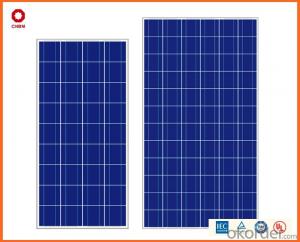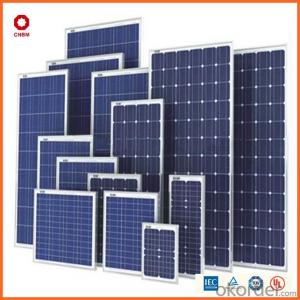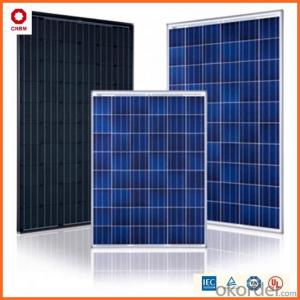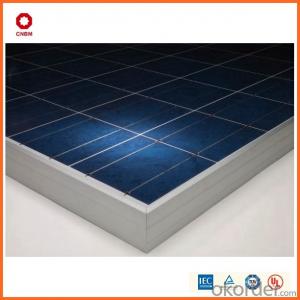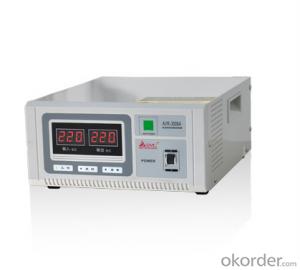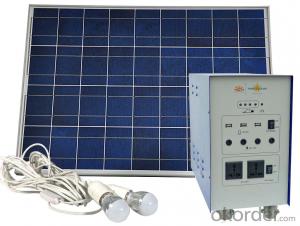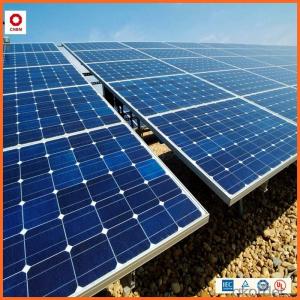305w Poly Solar Panel 0.45/W A Grade Good Solar Panel on Sale
- Loading Port:
- China main port
- Payment Terms:
- TT OR LC
- Min Order Qty:
- 1 watt
- Supply Capability:
- 10000000 watt/month
OKorder Service Pledge
OKorder Financial Service
You Might Also Like
Item specifice
Product Description:
Hot Sale !!! Quality and Safety of 245w-320w Poly Solar Panel
1. Rigorous quality control meets the highest international standards.
2. High-transmissivity low-iron tempered glass, strong aluminium frame.
3. Using UV-resistant silicon.
4. IS09001/14001/CE/TUV/UL
Warranties of 245w-320w Poly Solar Panel
1. 10 years limited product warranty
2. 15 years at 90% of the minimal rated power output
3. 25 years at 80% of the minimal rated power output
Specification
Characteristics of Poly solar panels CNBM (245-320W) | |||||
Max Power Voltage Vmp(V) | 30.3 | 30.8 | 31.1 | 31.4 | 31.85 |
Max Power Current Imp(A) | 7.60 | 7.64 | 7.73 | 7.81 | 7.85 |
Open Circuit Voltage Voc(V) | 36.1 | 36.6 | 37 | 37.3 | 37.68 |
Short Circuit Current Isc(A) | 8.50 | 8.55 | 8.65 | 8.75 | 8.85 |
Max Power Pm(W) | 230W | 235W | 240W | 245W | 250W |
Temperature Coefficient of Cells Poly solar panels CNBM (245-320W) | |
NOCT | 45 ± 2 |
Temperature Coeffucients of Isc | 0.0492 |
Temperature Coeffucients of Voc | -0.3374 |
Temperature Coeffucients of Voc | -0.4677 |
Mechanical Data of Poly solar panels CNBM (245-320W) | |
Dimension | 1638 × 982 × 40 mm |
Weight | 19.5 kg |
No. of Cells and Connections | 60 (6 ×10) |
Tolerance | 0 ~ + 5 W |
Cell | Monocrystalline Cell 156 × 156 mm |
Packing | 624 Pcs/40ft(H) Container |
Limits of Poly solar panels CNBM (245-320W) | |
Operating Temperature | -40 to +85 |
Storage Temperature | -40 to +85 |
Max System Voltage | 1000VDC(IEC) / 600VDC(UL) |
Features of our products:
• High conversion efficiency mono/poly-crystalline amorphous silicon solar cells
• Modules incorporate high performance bypass diodes to minimize the power drop caused by shading
• High transmittance, low-iron tempered glass
• High performance EVA encapsulant to prevent destroying and water.
• AI frame: without screw, corner connection. 8 holes on the frame can be installed easily
• Good performance of preventing from atrocious weather such as wind and hails
• Certifications: CE IEC TUV VDE UL, Class I
• 10 years 90% power output warranty

Shipping of 245w-320w Poly Solar Panel
By Sea | Delivery from Shanghai or Ningbo seaport |
By Air | Departure from Shanghai Pudong Airport |
By Express | Post by DHL, EMS, UPS, TNT. |
- Q:Can solar energy systems be used in powering disaster relief centers or emergency shelters?
- Yes, solar energy systems can definitely be used in powering disaster relief centers or emergency shelters. In fact, solar power is increasingly being utilized in such situations due to its numerous benefits. One of the key advantages of solar energy systems is their ability to function independently of the grid. During natural disasters or emergencies, the conventional power grid may be disrupted or completely unavailable. In such situations, solar panels can generate electricity from sunlight, providing a reliable and sustainable source of power for essential operations in relief centers or shelters. Solar energy systems are also highly portable and modular, making them ideal for temporary installations. They can be quickly deployed and set up in disaster-stricken areas, providing immediate power for lighting, communication devices, medical equipment, and other critical needs. Additionally, solar energy systems can be easily expanded or modified to meet the increasing energy demands of relief centers or shelters as the situation evolves. Furthermore, solar power systems have minimal environmental impact compared to traditional fuel-based generators. They produce clean energy without releasing harmful pollutants or greenhouse gases, which is particularly important in disaster-stricken areas where air quality may already be compromised. Lastly, solar energy systems offer long-term cost savings. Once installed, solar panels require minimal maintenance and have a lifespan of 25-30 years. This reduces the reliance on expensive and often scarce fuel supplies, allowing relief centers and emergency shelters to allocate their resources more efficiently. In conclusion, solar energy systems are a reliable, sustainable, and cost-effective solution for powering disaster relief centers or emergency shelters. Their ability to function independently, portability, minimal environmental impact, and long-term cost savings make them an excellent choice for powering critical operations during times of crisis.
- Q:Can solar energy systems be used for powering off-grid agricultural processing facilities?
- Yes, solar energy systems can be used for powering off-grid agricultural processing facilities. Solar panels can be installed on the roofs of these facilities or in nearby open spaces to capture sunlight and convert it into electricity. This renewable energy source can provide a consistent and reliable power supply for various agricultural processing operations, such as irrigation systems, grain milling, food drying, and cold storage. Additionally, solar energy systems can be combined with battery storage to ensure uninterrupted power supply even during cloudy days or at night. This can significantly reduce reliance on fossil fuels, lower operating costs, and promote sustainable agricultural practices.
- Q:How does the temperature affect the performance of solar panels?
- The temperature can significantly affect the performance of solar panels. In general, solar panels operate at their highest efficiency when the temperature is around 25 degrees Celsius (77 degrees Fahrenheit). However, as the temperature rises above this ideal range, the performance of the panels can decline. The primary reason for the decrease in performance is that solar panels are made up of photovoltaic (PV) cells that convert sunlight into electricity. These cells consist of semiconductors, typically made of silicon, which generate electricity when exposed to sunlight. When the temperature increases, the electrons in the PV cells gain more energy and move more rapidly, which can lead to increased resistance within the cells. This increase in resistance reduces the flow of electric current, resulting in a decrease in the overall power output of the solar panel. Moreover, the temperature increase can also cause a phenomenon called the "thermal effect." This effect results in a slight increase in the voltage output of the solar panels, but it is not proportional to the increase in temperature. As a result, the overall efficiency of the solar panels decreases. Additionally, higher temperatures can also lead to a decrease in the lifespan of the solar panels. The excessive heat can cause thermal stress on the materials used in the construction of the panels, leading to potential degradation and reduced durability over time. It is important to note that while high temperatures can negatively impact the performance of solar panels, they can still produce electricity even in hot climates. However, to mitigate the effects of temperature, solar panels are often designed with heat dissipation mechanisms, such as air gaps, ventilation, or cooling systems, to prevent excessive heat buildup and maintain optimal performance. Ultimately, the impact of temperature on solar panel performance varies depending on the specific design and materials used. It is crucial to consider temperature as a factor when installing solar panels and take necessary measures to maximize their efficiency and longevity.
- Q:Are there any risks of electrical grounding issues with solar energy systems?
- Solar energy systems can pose several risks due to electrical grounding issues. One major risk is the potential for electric shock, which occurs when the grounding system is not correctly installed or maintained. This can cause a buildup of electrical current, leading to contact with live electrical components and subsequent shock. Another risk is the possibility of fire. When the grounding system is improperly installed, it can result in electrical arcing, which can ignite a fire. This is especially hazardous as solar energy systems are often situated on rooftops, making it easier for a fire to rapidly spread throughout the entire building. Furthermore, a faulty grounding system can cause damage to the solar energy system itself. Without proper grounding, electrical surges and fluctuations can occur, harming sensitive components like inverters and batteries. To mitigate these risks, it is essential to ensure the proper installation and regular inspection and maintenance of the grounding system in a solar energy system. This involves using appropriate grounding equipment like grounding rods or conductors, as well as ensuring all connections are secure and free from corrosion. Regular testing should also be carried out to assess the effectiveness of the grounding system. It is advisable to enlist the services of a qualified professional for the installation and maintenance of the grounding system to minimize the hazards associated with electrical grounding issues in solar energy systems.
- Q:Can solar energy systems be used for powering off-grid islands?
- Yes, solar energy systems can be used for powering off-grid islands. Solar panels can be installed on rooftops or open spaces to harness sunlight and convert it into electricity. This renewable energy source can provide a reliable and sustainable power supply for off-grid islands, reducing their dependence on fossil fuels and decreasing their carbon footprint. Additionally, advancements in battery storage technology allow excess solar energy to be stored and used during cloudy periods or at night, ensuring a continuous power supply.
- Q:Are there any disadvantages to installing a solar energy system?
- Yes, there are a few disadvantages to installing a solar energy system. Some of the main drawbacks include the high upfront cost of installation, the need for sufficient sunlight to generate optimal power, and the requirement for ample space to accommodate the solar panels. Additionally, solar energy systems can be less efficient during cloudy or rainy periods, and their production may not align with peak energy demands. Finally, the maintenance and occasional replacement of components can be costly and time-consuming. Despite these disadvantages, the long-term benefits and environmental advantages of solar energy make it an increasingly popular and viable option for many households and businesses.
- Q:Can solar energy systems be installed on parking lots or carports?
- Yes, solar energy systems can be installed on parking lots or carports. In fact, these locations offer ample space for solar panel installations, allowing for the generation of clean and renewable energy while also providing shade for parked vehicles. This dual-purpose use of space is increasingly popular and beneficial in terms of reducing carbon emissions and utilizing underutilized areas for sustainable energy production.
- Q:What is the role of solar trackers in solar energy systems?
- The role of solar trackers in solar energy systems is to optimize the efficiency and output of solar panels by tracking the movement of the sun throughout the day. Solar trackers automatically adjust the position of the panels to ensure that they are always facing the sun at the optimal angle, maximizing the absorption of sunlight and increasing the overall energy generation of the system.
- Q:How does the efficiency of solar panels vary across different temperatures?
- The efficiency of solar panels typically decreases as the temperature increases.
- Q:Can a solar energy system be installed on commercial buildings?
- Solar energy systems can indeed be installed on commercial buildings, with many already adopting this sustainable method of generating electricity. Commercial buildings offer ample rooftop space or open land areas where solar panels can be installed. These panels can be seamlessly incorporated into the building's design or mounted on the rooftop, effectively harnessing sunlight and converting it into usable energy. The installation of a solar energy system on a commercial building brings numerous benefits. Firstly, it significantly reduces energy costs, as solar energy is both renewable and cost-free. Secondly, it serves as a clean and eco-friendly alternative to traditional energy sources, effectively reducing the building's carbon footprint. Moreover, commercial buildings with solar panels can take advantage of various government incentives and tax credits that encourage the use of renewable energy. Ultimately, the installation of a solar energy system on commercial buildings is not only feasible but also financially and environmentally advantageous.
1. Manufacturer Overview |
|
|---|---|
| Location | |
| Year Established | |
| Annual Output Value | |
| Main Markets | |
| Company Certifications | |
2. Manufacturer Certificates |
|
|---|---|
| a) Certification Name | |
| Range | |
| Reference | |
| Validity Period | |
3. Manufacturer Capability |
|
|---|---|
| a)Trade Capacity | |
| Nearest Port | |
| Export Percentage | |
| No.of Employees in Trade Department | |
| Language Spoken: | |
| b)Factory Information | |
| Factory Size: | |
| No. of Production Lines | |
| Contract Manufacturing | |
| Product Price Range | |
Send your message to us
305w Poly Solar Panel 0.45/W A Grade Good Solar Panel on Sale
- Loading Port:
- China main port
- Payment Terms:
- TT OR LC
- Min Order Qty:
- 1 watt
- Supply Capability:
- 10000000 watt/month
OKorder Service Pledge
OKorder Financial Service
Similar products
New products
Hot products
Hot Searches
Related keywords
